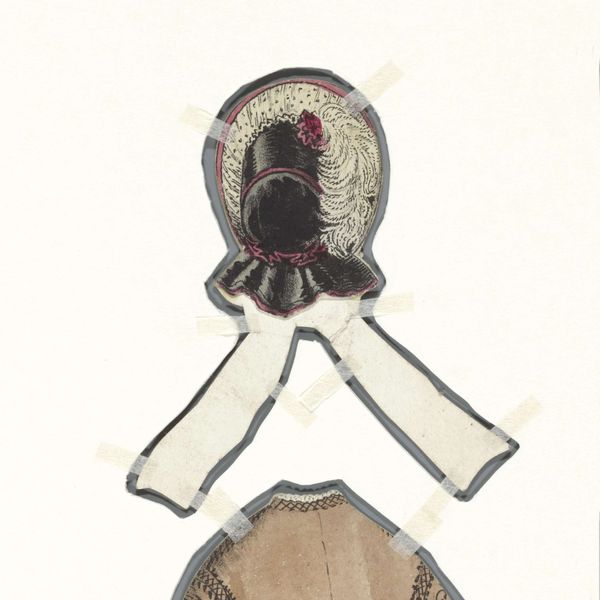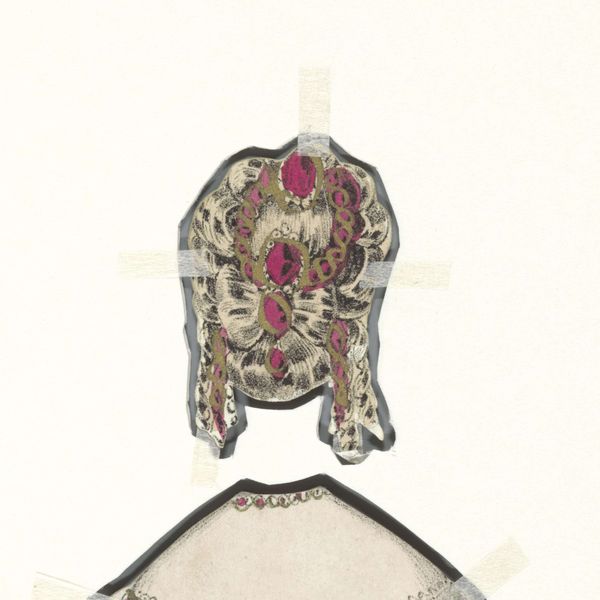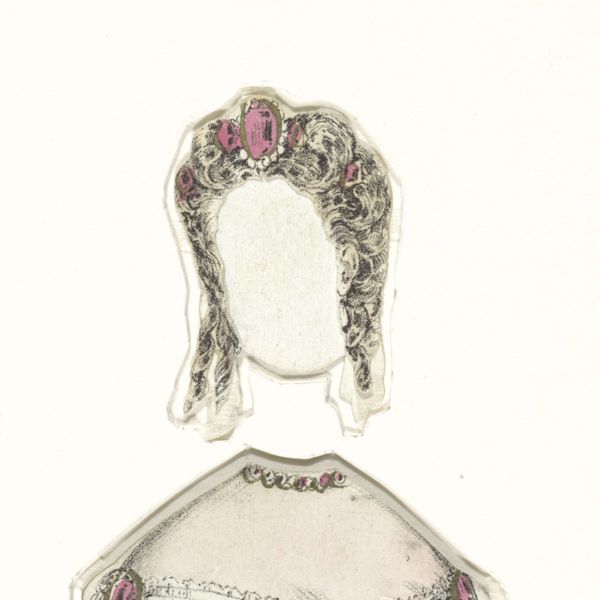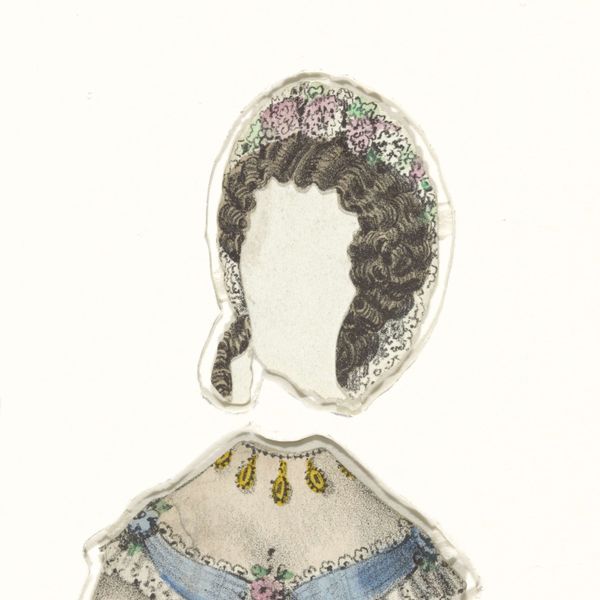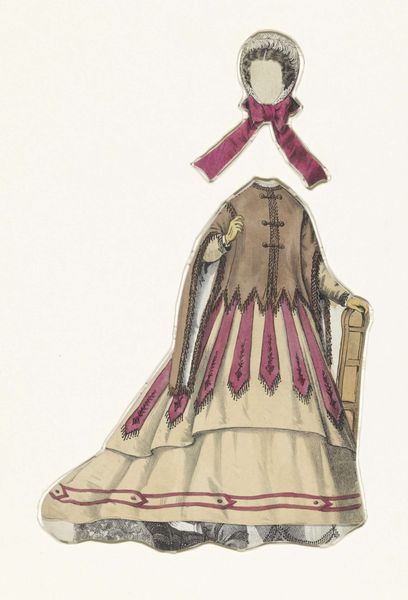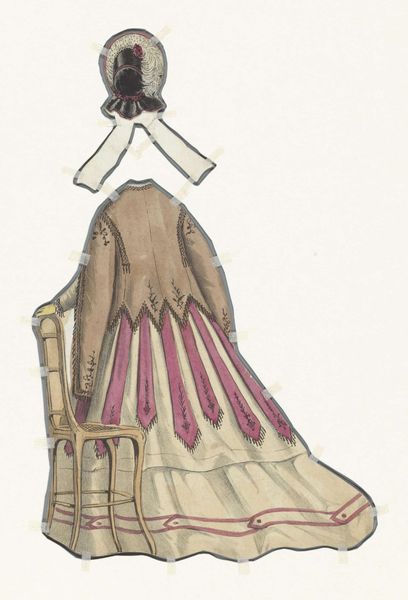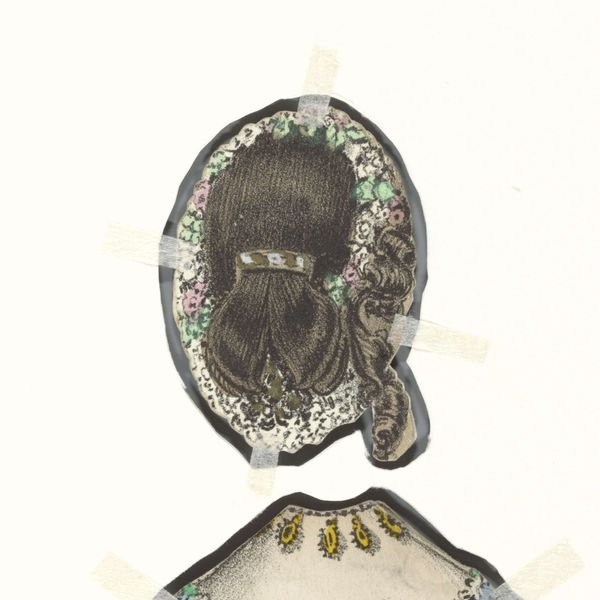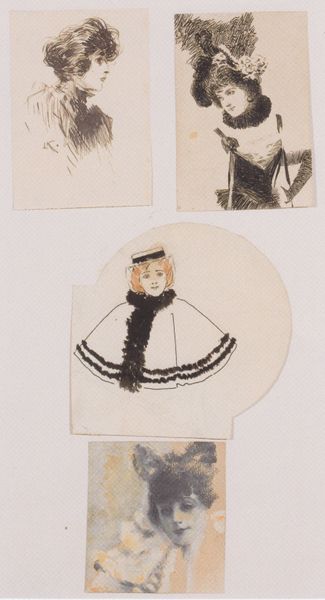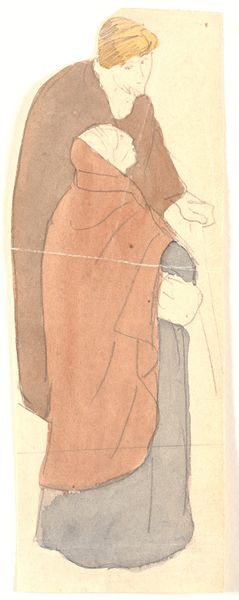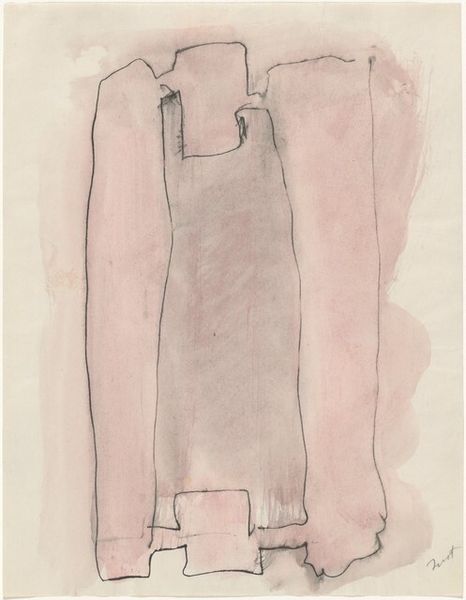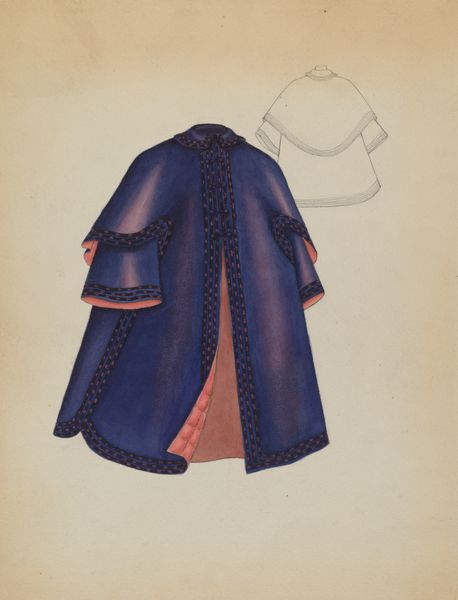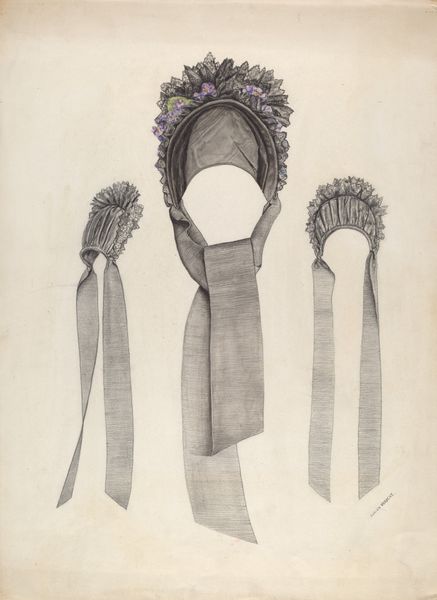
graphic-art, print
#
portrait
#
graphic-art
# print
Dimensions: height 75 mm, width 65 mm
Copyright: Rijks Museum: Open Domain
Curator: Here we have a charming print from between 1825 and 1875 titled "Kapsel met muts voor een uitknippop," or "Cap with bonnet for a paper doll," created by an anonymous artist. Editor: It has an almost melancholic sweetness, don't you think? The absence of a face combined with the meticulous detail of the clothing suggests something lost, or perhaps, a suppressed identity. Curator: Indeed. Bonnets in this era, though symbols of modesty and domesticity, paradoxically also served as markers of status. The bonnet itself speaks volumes; its shape, materials, and embellishments all communicated social standing within the strict hierarchies of 19th-century society. Editor: Exactly. Consider, too, that the very nature of a paper doll implies performance, a constructed identity. To dress a doll in this bonnet isn't simply about aesthetics, it's about encoding societal expectations onto a young, impressionable mind. Curator: The deep pink ribbon, for example. Pink often signifies romance, but coupled with the restrictive bonnet, it becomes complicated. The innocence of the doll contrasts with the highly gendered and restrictive expectations placed upon women at the time. Editor: Absolutely. There's a tension between the doll's supposed freedom in being "dressed" and the historical constraints on women's self-expression. We need to understand how something as simple as fashion became an arena for reinforcing patriarchal structures. Curator: We see that tension even more clearly when we consider that this print is from the 19th century when printed materials became more accessible. The print carries that aura of accessible design meant to replicate, distribute, and even impose specific visual vocabularies and gender ideals, in society at large. Editor: Right! The piece performs more than pretty attire or childhood amusement; it materializes social norms through an appealingly "benign" and beautiful format. The symbolic impact on visual memory and historical legacy, then, is complex. Curator: Looking closely has made this deceptively simple image much richer for me. I feel compelled to reconsider everyday adornments and their encoded symbolic weight. Editor: I agree. It highlights how even playful objects like paper dolls become implicated in complex socio-political conversations, reminding us that seemingly innocent objects may harbor intricate histories.
Comments
No comments
Be the first to comment and join the conversation on the ultimate creative platform.
